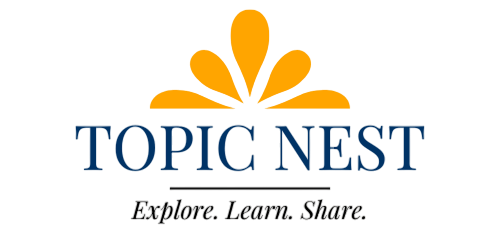Classification of Computers
These days, various types of computer technology are available. Each sort of computer has varied functionality and data processing capabilities, as well as different output results.
However, each computer’s methodologies or approaches, as well as its size, capacity, attributes, and data handling, may differ.
The computers can be classified into three categories:
1. On the Basis of Size and Capacity, [Supercomputer, Mainframe, Mini, and Micro Computer].
2. On the Basis of Purposes, [General and Special Purpose].
3. On the Basis of Hardware Design and Type [Analog, Digital, and Hybrid Computer].
1. SuperComputer
A supercomputer is the most powerful, fastest, and most expensive form of computer for data processing. The size and storage capacity of supercomputers are likewise enormous (they can take up a lot of space) and are designed to process large amounts of data quickly and efficiently.
These are designed to accomplish a variety of activities. As a result, numerous CPUs on these supercomputers function in parallel. Multiprocessing or Parallel Processing is the name given to this capability of a supercomputer.
The design of a supercomputer is complex, as it can be heterogeneous, mixing machines with multiple architectures, and it outperforms most existing desktop computers. As a result, this system was upgraded to an ultra-high-performance supercomputer.
Each component of a supercomputer is responsible for a certain duty, such as arranging and solving the most complex problems that necessitate a massive amount of computation.
Applications
Examples: IBM Roadburner, IBM Blue Gene, Intel ASI Red. PARAM-1000, and CRAY-XMP-14.
2. Mainframe Computer
Mainframe computers are multi-programming, high-performance computers with multi-user capabilities, which means they can handle the workload of up to 100 users at once.
The mainframe has a massive storage capacity and a high-speed data processing system. In addition, hundreds of input and output devices can be handled at once.
The mainframe is a powerful computer that can perform complex calculations in parallel and for an extended period of time. These computers contain many microprocessors capable of processing data at excessively high performance and speed.
In practically every parameter, the mainframe outperforms our modern personal computers. The ability to change them “on the fly” on the mainframe computer ensures that operations are not disrupted. Furthermore, the average CPU consumption easily exceeds 85 percent of the total power.
Because the mainframe supports multiple processes at the same time, it can be more powerful than supercomputers. Supercomputers, on the other hand, can run a single programme quicker than a mainframe. In the past, mainframes required the setup of entire rooms or even floors of entire buildings.
Today, IBM is the world’s top manufacturer of mainframe computers. The reliability of mainframes has improved over the last 60 years as technology has progressed. These computers are capable of repairing the majority of hardware and software flaws.
Applications:
Departmental and commercial enterprises such as banks, companies, scientific research institutions, and government departments such as railways primarily employ mainframe computers. These computers have a 24-hour working capacity. Hundreds of people can work on these calculations at the same time.
The mainframe is used to execute duties such as keeping track of payments, research centres, advertising, sending invoices and notices, paying staff, ticket booking, keeping track of user transactions, keeping precise tax information, and so on.
Examples: IBM Es000 series, ICL39 Series, and CDC 6600.
3. Mini Computer
A minicomputer is a digital, multi-user computer system with many CPUs connected. As a result, instead of a single person working on these computers, multiple individuals can work on them at the same time. It can also work with other devices such as a printer, plotter, and so on.
Minicomputers are a type of computer that is between microcomputers and minicomputers in terms of capabilities and price. Minicomputers, on the other hand, are larger in terms of size, storage, and performance than mainframes and supercomputers.
Instead of assigning many microcomputers to a single task, which is time-consuming and expensive, minicomputers are designed to do multiple computing tasks at the same time.
A minicomputer, in general, is a multi-threaded system (many processes running at the same time) capable of supporting one to 200 users at the same time; these computers are currently used to hold big databases, multi-user applications, and the automation industry.
Applications
In industries, bookings, and research centres, minicomputers are utilised to run real-time applications. Banks, as well as the fields of Higher Education and Engineering, use minicomputers to prepare payroll for employees’ salaries, keep records, track financial accounts, and so on.
Examples: PDP 11 and IBM (8000 Series).
4. Micro Computer
Today, we use several computers at home, and the microcomputer is the most prevalent. With the invention of microprocessors in 1970, it became possible to utilise computers for personal use at a cheap cost and fair pricing, which became known as the Digital Personal Computer.
Microcomputers are small and have limited storage capacity. These computers are made up of a variety of components, including input and output devices, software, operating systems, networks, and servers, all of which must operate together to form a full Personal Digital Computer.
Microcomputers include more than just a PC or a laptop. Smartphones, Tablets, PDAs, servers, palmtops, and workstations are all examples of microcomputers.
This can be used in any professional environment, as well as at home for personal usage.
Microcomputers are mostly used to record and process people’s daily chores and requirements. Although only one person can work at a time on a single PC, the operating system allows for multitasking. To take use of the benefits and improve the user experience, the PC can be connected to the Internet.
Microcomputers have increased in demand for every industry due to the growth of multimedia, tiny equipment, optimised energy usage, and the LAN.
People’s increasing desire and necessity for microcomputers has resulted in amazing development of every component related to microcomputers.
Applications
PCs are widely utilised in a variety of settings, including the home, the office, data collection, business, education, entertainment, publishing, and so on.
In a major firm, it keeps track of details and prepares letters for correspondence, as well as preparing invoices, bookkeeping, word processing, and operating file systems.
IBM, Lenovo, Apple, HCL, HP, and others are some of the top PC makers.
Examples: Desktops, tablets, smartphones, and Laptops.
The rapid technological advancement of microcomputers. As a result, today’s microcomputers can be found in the form of a book, a phone, or even a digital clock.




